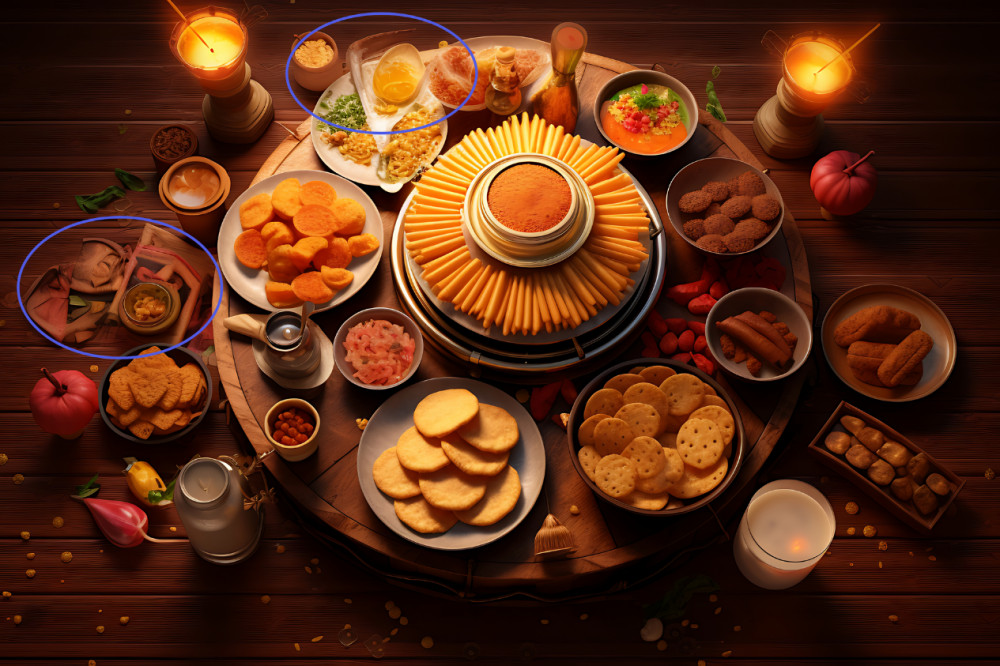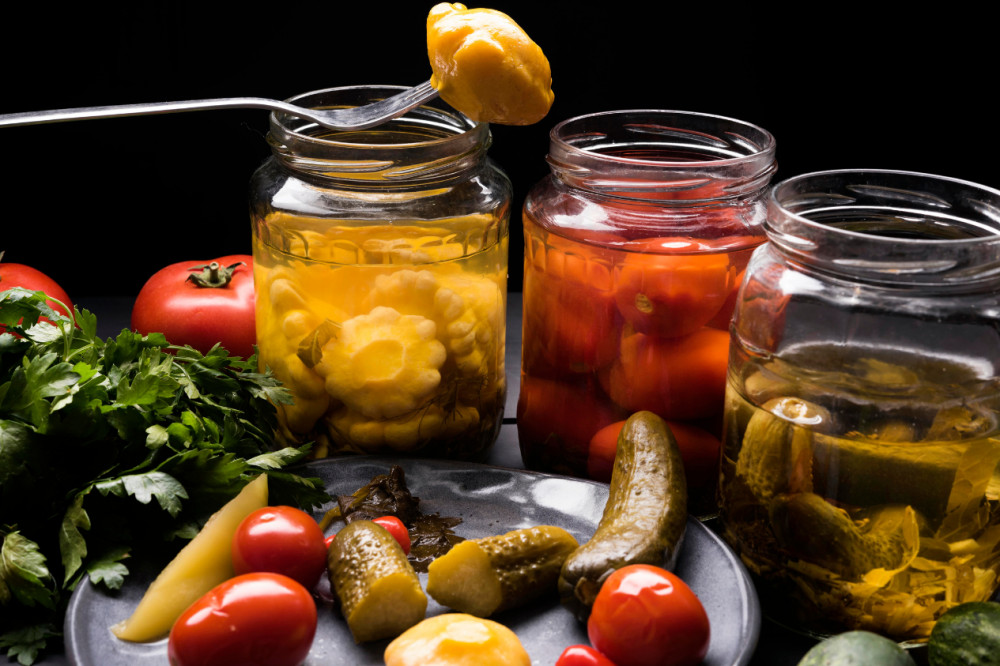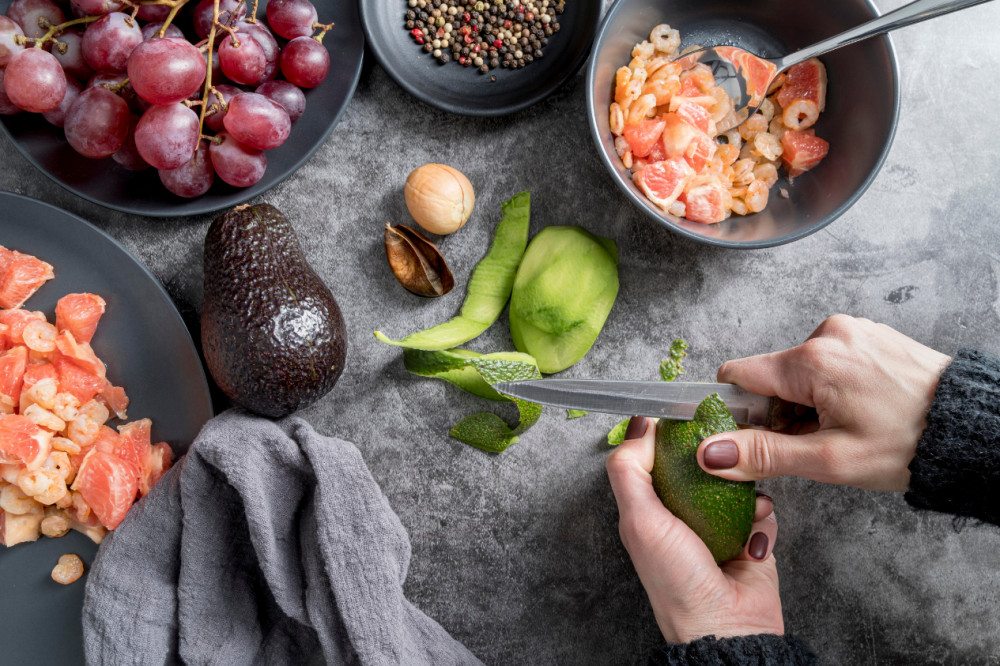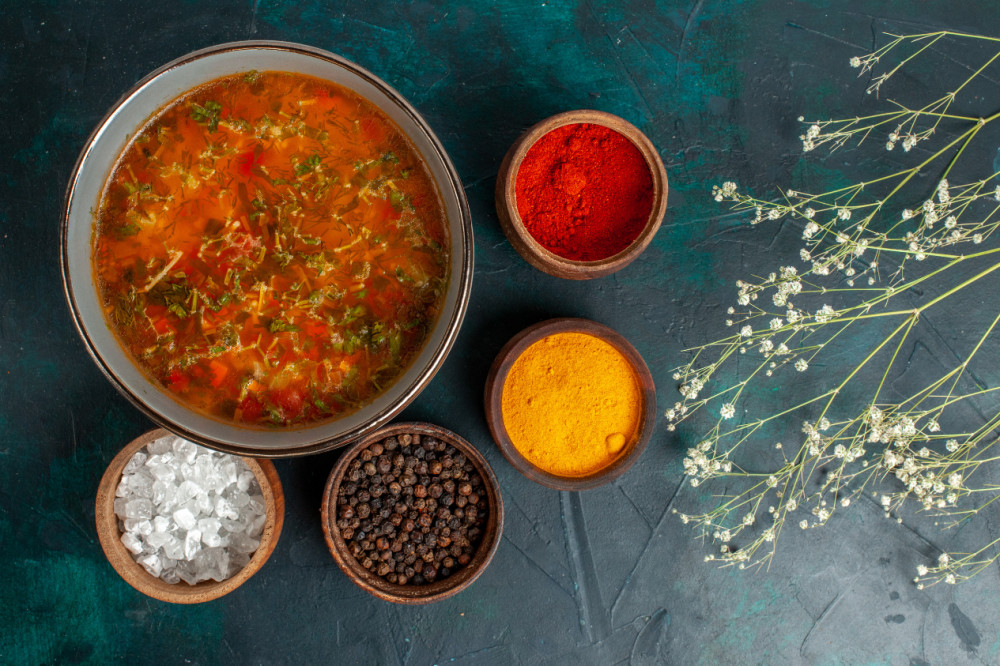
The Super Summer Foods

Our not-so-favourite season is here - Summer! With the sun stretching longer, the air begins to shimmer with heat, and our cravings are taking a shift. It is now time to consume light, cooling, and hydrating meals to stay relieved in every bite. Summer foods are how our body asks for shade - summer foods aren’t just nourishing; it’s an instinct. Encourage these moments, and with Foodism, let’s explore ‘All Shades of Summer’ with these summer food recipes.
Summer drinks & coolers
Aam Panna
Ingredients:
- 2 medium-sized raw mangoes (kaccha aam)
- 4 cups water
- 4–5 tablespoons sugar (adjust to taste)
- ½ teaspoon roasted cumin powder
- ¼ teaspoon black salt (kala namak)
- ¼ teaspoon regular salt
- A few mint leaves (optional but adds freshness)
- Ice cubes (for serving)
Method:
- Pressure cook or boil the mangoes in water for 2–3 whistles (or until soft).
- Roast the mangoes on an open flame as you do for baingan bharta until the skin is charred and the flesh is soft. (Adds a smoky flavour!)
- Let the mangoes cool. Peel off the skin and scoop out the pulp.
- Add the pulp to a blender along with sugar, cumin powder, black salt, regular salt, and mint leaves (if using). Blend until smooth.
- Add water to the mixture and blend again. Adjust consistency and sweetness as per your taste.
- Pour your aam panna into glasses over ice cubes.
- Garnish the aam panna with a mint sprig or a pinch of cumin on top.
- Tip: You can add a pinch of crushed black pepper or green chilli while blending your aam panna to get a spicy kick.
Panakam / Panaka / Panagam
Ingredients:
- 2 tbsp grated jaggery (adjust to taste)
- 2 cups cold water
- ¼ tsp dry ginger powder (saunth / sukku)
- ¼ tsp black pepper powder
- ¼ tsp cardamom powder
- A pinch of edible camphor (optional, very little!)
- A few tulsi (basil) leaves (optional)
Method:
- In a bowl or jug, mix the jaggery with water until fully dissolved.
- Strain to remove any impurities (especially if it’s unrefined jaggery).
- Add dry ginger, black pepper, cardamom powder, and edible camphor if using. Stir well.
- Add tulsi leaves for a traditional touch and an extra cooling effect.
- You can refrigerate panakam/panaka/panagam for a while or serve immediately with a few ice cubes.
Gond Katira
Ingredients:
- 1 tbsp Gond Katira (edible gum/tragacanth gum)
- 2–3 tbsp rose syrup or Rooh Afza
- 2.5 cups chilled water or milk (optional)
- Ice cubes (optional)
- Chopped nuts (almonds/pistachios) – optional
Method:
- Take 1 tbsp gond katira and rinse it once under cold water.
- Soak in a bowl of water overnight or for at least 6–8 hours.
- It will swell up and turn jelly-like — about 4–5x its size.
- In the morning, gently remove any yellow/brown centre or impurities.
- Rinse again if needed and keep it chilled.
- In a glass, add 1–2 tbsp of the soaked gond katira.
- Pour cold water or milk if you like your gond katira sharbat creamy.
- Mix in 1–2 tbsp rose syrup or Rooh Afza to the gond katira mixture
- Add ice cubes, and give a good stir to the gond katira sharbat.
- Top the gond katira sharbat with sliced almonds or pistachios for texture and flavour.
Summer salads & cold dishes
Watermelon and Feta Salad
Ingredients:
- 2 cups seedless watermelon, cubed or balled
- ½ cup feta cheese, crumbled (or cubed)
- ¼ cup fresh mint leaves, roughly torn
- 1 tbsp extra virgin olive oil
- 1 tsp balsamic glaze or a squeeze of lemon juice
- A pinch of black pepper (optional)
- A pinch of salt (optional, depending on the feta)
Method:
- Cube your watermelon and feta, and keep them cold in the fridge till ready to use.
- To assemble the watermelon and feta cheese salad, take a large bowl or plate and gently mix watermelon, feta, and mint leaves.
- Drizzle with olive oil and balsamic glaze (or lemon juice).
- Sprinkle a tiny bit of black pepper and salt if needed.
- The watermelon and feta cheese salad is best served cold and fresh.
- Tip: Don’t let it sit too long, or the watermelon will start releasing water.
Cucumber Yoghurt Salad
Ingredients:
- 1 cup plain yoghurt (curd/dahi)
- 1 medium cucumber, peeled and grated or finely chopped
- ¼ tsp roasted cumin powder
- Salt to taste
- 1 tbsp fresh coriander leaves, chopped
- Optional: a pinch of black salt, chilli powder, or chopped green chilli
Method:
- Grate or finely chop the cucumber. Optionally, squeeze out some water if you want a thicker consistency.
- Beat the yoghurt until smooth and creamy. If it's too thick, add 1–2 tbsp of chilled water.
- Add the cucumber, cumin powder, salt, and any optional spices/herbs. Stir well to combine.
- Garnish your cucumber yoghurt salad with coriander and serve cold.
- Great with biryani, parathas, or as a standalone summer cooler.
- Tip: You can add pomegranate seeds on top of your cucumber yoghurt salad for a sweet and crunchy twist.
Chickpea Salad
Ingredients:
- 1.5 cups boiled chickpeas (or 1 canned, drained & rinsed)
- ½ cup cucumber, chopped
- ½ cup tomatoes, chopped
- ¼ cup red onion, finely chopped
- 2 tbsp fresh coriander or parsley, chopped
- 1 green chilli or jalapeño (optional), chopped
- Juice of 1 lemon
- 1–2 tbsp olive oil
- Salt to taste
- ½ tsp roasted cumin powder
- Optional: black pepper, chaat masala, or feta cubes
Method:
- If using dry chickpeas, soak overnight and pressure cook until soft. Canned ones work great too—just rinse well.
- Add chopped cucumber, tomato, onion, chilli, and herbs to the chickpeas in a bowl.
- Squeeze lemon juice, drizzle olive oil, and sprinkle salt, cumin, and pepper or chaat masala (if going Indian-style).
- Gently toss everything together and your high-protein yet summer-friendly chickpea salad is ready.
- Chill your chickpea salad if you like it cold, or serve fresh
Summer light main course meals
Curd Rice
Ingredients:
- 1 cup cooked rice (soft and slightly mushy works best)
- ¾ cup to 1 cup curd/yoghurt (fresh, not too sour)
- ¼ cup milk (optional – makes it creamier)
- Salt to taste
For tempering:
- 1 tsp oil or ghee
- ½ tsp mustard seeds
- 1 tsp urad dal (optional but classic)
- 1–2 green chillies, chopped
- 1 tsp grated ginger
- A few curry leaves
- A pinch of asafoetida (hing)
Optional add-ons:
- 1 tbsp grated carrot
- 1 tbsp pomegranate seeds or grapes
- Chopped coriander for garnish
Method:
- Cook the rice until soft. Mash it slightly with the back of a spoon while it's still warm.
- Once the rice is warm (not hot), mix in curd, milk (if using), and salt. Stir until creamy.
- Heat oil in a small pan. Add mustard seeds — let them splutter.
- Add urad dal, green chillies, ginger, curry leaves, and hing.
- Sauté until urad dal turns golden.
- Pour the tempering over the curd rice and mix well. A great soothing meal is ready for hot afternoons!
- Garnish your curd rice with grated carrot, coriander, or pomegranate if you like.
Vegetable stir-fried
Ingredients:
- 1 cup broccoli florets
- ½ cup carrot, thinly sliced
- ½ cup bell peppers (any colour), sliced
- ½ cup mushrooms, sliced (optional)
- ½ cup zucchini or baby corn (optional)
- 2 tbsp spring onion or regular onion, sliced
- 2–3 cloves garlic, minced
- 1-inch piece ginger, minced
- 1 tbsp soy sauce
- 1 tsp vinegar or lemon juice
- 1 tsp chilli sauce (optional)
- 1 tsp sesame oil or any neutral oil
- Salt & pepper to taste
- Toasted sesame seeds or chopped peanuts for garnish
Method:
- Cut all veggies into even, bite-sized pieces so they cook evenly and quickly.
- Use a wok or large pan. Heat oil on a high flame.
- Add garlic and ginger. Sauté for a few seconds till fragrant.
- Start with harder veggies like carrots and broccoli.
- After a minute or two, toss in bell peppers, mushrooms, etc.
- Stir-fry on high heat so veggies stay crisp yet cooked.
- Add soy sauce, vinegar, chilli sauce, and a little salt & pepper.
- Toss quickly to coat the veggies.
- Top with sesame seeds or spring onions. Your stir-fried veggies are ready!
- Serve hot — as-is, or with rice/noodles!
Lemon Rice
Ingredients:
- 2 cups cooked rice (preferably cooled or leftover)
- 1.5 tbsp oil (coconut or any neutral oil)
- 1 tsp mustard seeds
- 1 tsp urad dal (optional but traditional)
- 1 tsp chana dal (optional, for crunch)
- 1–2 green chillies, slit or chopped
- 1 dry red chilli (optional)
- 1 sprig of curry leaves
- 1 tbsp peanuts or cashews (optional, for texture)
- 1/4 tsp turmeric powder
- Salt to taste
- Juice of 1–1.5 lemons (adjust to taste)
- Fresh coriander leaves for garnish (optional)
Method:
- Make sure your rice is cooled and non-sticky. Fluff it up with a fork.
- Heat oil in a pan. Add mustard seeds and let them splutter.
- Add urad dal, chana dal, red chilli, peanuts, and sauté until golden.
- Toss in green chillies and curry leaves. Sauté for a few seconds.
- Add turmeric and salt, and stir for a couple of seconds (don't burn the turmeric).
- Add the rice and mix gently to coat it with the tempered oil and spices.
- Turn off the heat and add lemon juice. Mix well.
- Garnish your lemon rice with coriander. Serve with papad, pickle, or raita.
- Tip: If you add lemon drops while the heat is on, it can turn slightly bitter.
Lauki Bharta
Ingredients:
- 1 medium bottle gourd (lauki), peeled and grated or finely chopped
- 1 medium onion, finely chopped
- 1 medium tomato, chopped
- 2–3 green chillies, chopped (optional, adjust to heat preference)
- 1-inch piece of ginger, minced
- 2–3 cloves of garlic, minced
- ½ tsp turmeric powder
- 1 tsp coriander powder
- 1 tsp cumin powder
- 1 tsp garam masala
- ½ tsp chilli powder (optional for heat)
- 1 tbsp oil or ghee
- Salt to taste
- Fresh coriander leaves for garnish
Method:
- For a smoky bharta: Lightly roast the whole bottle gourd on an open flame, just like baingan for baingan bharta. This gives it a nice smoky flavour. Once done, peel off the charred skin and mash the flesh.
- For a quick bharta: Alternatively, you can skip the roasting step and directly cook grated or chopped lauki in the pan.
- Heat oil or ghee in a pan.
- Add chopped garlic and ginger, and sauté for 30 seconds until fragrant.
- Add onions and cook until they soften.
- Add chopped tomatoes, green chillies, and all the ground spices (turmeric, cumin powder, coriander powder, chilli powder). Cook until the oil separates from the masala and the tomatoes soften.
- Add the grated or mashed lauki to the pan. Mix it well with the masala.
- Cook for about 5–7 minutes, stirring occasionally. Let the flavours blend, and adjust the salt as needed.
- Add garam masala and mix. Cook for another 1–2 minutes.
- Garnish your lauki bharta with fresh coriander leaves.
- Serve your lauki ka bharta hot with roti, paratha, or rice.
Pakhala Bhaat
Ingredients:
- 1 cup cooked rice (preferably cooled, leftover rice works best)
- 2–3 cups water
- 1 tbsp yoghurt or buttermilk (for fermentation)
- Salt to taste
For the tempering:
- 1 tbsp oil (preferably mustard oil for authenticity)
- 1 tsp mustard seeds
- 2–3 dried red chillies
- 1–2 green chillies, slit
- 1 tbsp ginger, minced
- 1 sprig of curry leaves (optional)
- A pinch of asafoetida (hing)
Method:
- In a large bowl, add the cooked rice.
- Pour in enough water to submerge the rice and make it a bit soupy.
- Add yoghurt or buttermilk and mix well.
- Cover and let it ferment for 6–8 hours, or overnight at room temperature. If you're short on time, you can let it sit for just a few hours to develop some tangy flavour.
- Heat oil in a small pan. Add mustard seeds and let them splutter.
- Add dried red chillies, slit green chillies, minced ginger, curry leaves, and a pinch of asafoetida.
- Sauté for a minute until fragrant and golden.
- Pour the tempering over the fermented rice and water mixture.
- Stir well, add salt to taste, and mix everything.
- You can serve pakhala bhaat as is or with fried vegetables, prawn curry, or saga saag (leafy greens).
- Some like to pair their pakhala bhaat with a side of chilli pickle or bitter gourd fry for extra punch.
Panta Bhaat
Ingredients:
- 1 cup cooked rice (preferably leftover rice, cooled)
- 2–3 cups water (adjust to submerge the rice)
- Salt to taste
Optional toppings:
- Raw onion, chopped
- Green chillies, slit or chopped
- Mustard oil – a few drops for that pungent kick
- Lemon juice – for added freshness
- Salted mashed potato, with mustard oil & onion (classic combo)
- Fried fish, achar (pickle), or aloo bharta on the side
Method:
- Use any short or medium-grain rice. Cook until soft but not mushy.
- Let it cool completely (leftover rice works best).
- Place the cooled rice in a bowl or pot.
- Pour in enough water to cover the rice by at least an inch.
- Cover loosely and let it sit overnight (8–12 hours) at room temperature.
- The longer it ferments, the tangier it becomes.
- In the morning, give the rice a gentle stir. Drain off excess water if you like a drier texture, or keep it soupy if you prefer it that way. Add salt to taste.
- Drizzle the panta bhaat with mustard oil, and top with raw onion and green chili.
- Pair your panta bhaat with fried hilsa, begun bhaja (fried eggplant), or even just achar.
Summer Desserts
Fruit Chaat
Ingredients:
- 1 apple, chopped
- 1 banana, sliced
- 1 orange or sweet lime, segmented
- 1/2 cup papaya, diced
- 1/2 cup watermelon or musk melon, diced
- 1 pomegranate (arils only)
- Few grapes (halved, optional)
- A few mint leaves, chopped (optional but lovely)
Spices:
- 1/2 tsp chaat masala
- 1/4 tsp black salt (kala namak)
- 1/4 tsp roasted cumin powder
- 1/2 tsp red chilli powder or paprika (optional, for kick)
- Juice of 1 lemon
- A dash of honey or a pinch of sugar (optional, balances tang)
Method:
- Wash, peel, and chop all fruits into bite-sized pieces.
- Keep them chilled if serving later — fruit chaat is best served cold!
- In a large mixing bowl, combine all chopped fruits.
- Sprinkle in the chaat masala, black salt, cumin powder, chilli powder, and lemon juice.
- Gently toss everything together to coat the fruits evenly.
- Add honey or sugar if your fruits are too tangy.
- Garnish the fruit chaat with chopped mint leaves for freshness.
- Serve the fruit chaat immediately or chill for 10–15 minutes before serving.
Tips:
- Avoid watery fruits like too much watermelon if you want to keep the fruit chaat crisp.
- You can also add boiled sweet potato, boiled chickpeas, or even guava for texture and variety in your fruit chaat.
- For a fun twist, try adding a sprinkle of crushed black pepper or a drizzle of tamarind chutney over the fruit chaat.
Mango Lassi
Ingredients:
- 1 cup ripe mango pulp (fresh or canned — Alphonso works best!)
- 1 cup thick curd/yoghurt (chilled)
- 1/2 cup cold milk or water (adjust for consistency)
- 2–3 tbsp sugar (or honey, to taste)
- A pinch of cardamom powder (optional but aromatic)
- Ice cubes (optional)
- Chopped pistachios or mint leaves for garnish
Method:
- Blend mango pulp, yoghurt, milk, sugar, and cardamom powder until smooth and creamy.
- Adjust thickness by adding more milk or water as needed in the mago lassi.
- Pour the mango lassi into glasses, and add ice cubes if desired.
- Garnish the mango lassi with chopped pistachios or mint leaves. Serve chilled!
Rose Lassi
Ingredients:
- 1 cup curd/yogurt (chilled)
- 1/2 cup cold water or milk
- 2–3 tbsp rose syrup (like Rooh Afza or homemade)
- 1–2 tsp sugar (optional, adjust to sweetness of rose syrup)
- A few drops of rose water (optional, for an extra floral kick)
- Ice cubes
- Dried rose petals or chopped nuts for garnish
Method:
- In a blender, mix yoghurt, rose syrup, water/milk, and sugar. Blend until frothy.
- Add rose water if you love that extra aromatic note in the rose lassi.
- Serve over ice and garnish your rose lassi with dried rose petals or slivers of almonds/pistachios.
Tip:
- Always use chilled ingredients for the creamiest, most refreshing lassi.
- For a thicker version, reduce the amount of milk/water.
- If you want your mango and rose lassi to be vegan then use coconut or almond yoghurt along with any plant-based milk (coconut, almond, cashew or soy).
These foods aren’t just food; they’re fuel and also a timeless tradition - passed down from generations, tweaked with love, and given a modern touch. This summer, give cheers to eating light and cool & download Foodism App now to explore more such recipes.
Related Blogs

Food Offerings and Festive Plates of Kartik Purnima
103 Views

The Science of Ferment: Easy Homemade Fermented Foods
80 Views

Zero-Waste Cooking: 7 Dishes That Use Every Bit
73 Views

Warm Spices, Cold Valleys: Comfort Food from Kashmir
112 Views

5 Wholesome Lunchbox Meals You Can Cook in 20 Minutes
119 Views